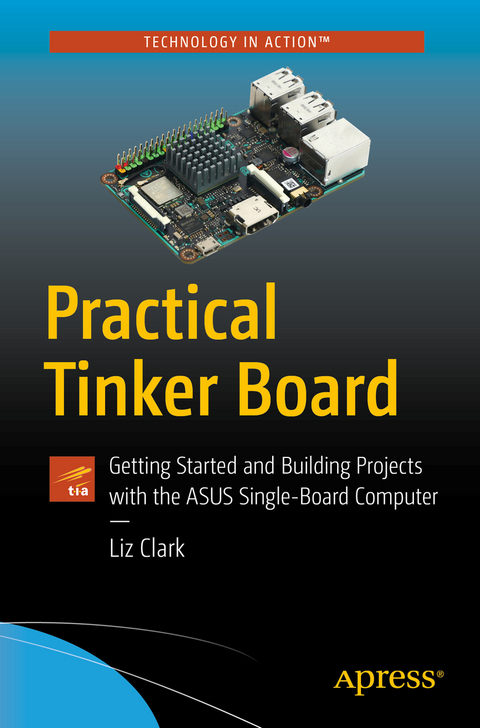
Practical Tinker Board
Apress (Verlag)
978-1-4842-3825-7 (ISBN)
Beginners will find the resources necessary to follow along and more seasoned makers can review additional information to engage with this new single-board computer platform. The projects are broad enough to show off the capability of the Tinker Board’s hardware and they can be used as is or you can add to them based on your skill level.
The ASUS Tinker Board offers an increase in hardware specs and, as a result, is more powerful compared to other single-board computers on the market, making it a great option for projects that would have previously been a challengeto run on other boards, such as the Raspberry Pi. Single-board computers in general are also gaining in popularity as solutions for many DIY tech projects, ranging from gaming to file storage to being a small form factor desktop Linux computer. Practical Tinker Board is a great resource to the maker community, enabling people to begin truly exploring the Tinker Board.
What You’ll Learn:
Review ASUS Tinker Board's capabilities and functions
Gain a deeper understanding of different Linux distributions
Build useful projects with a range of hardware and software
Take an in-depth look at how to install, configure and use ASUS Tinker Board in projects
Who This Book Is For:
Those who have previously worked on some beginner maker projects, such as basic Arduino and Raspberry Pi projects, and are looking toexpand their skills and knowledge of Linux, single board computers, programming and project builds.
Elizabeth Clark is a lifelong DIY-er and in recent years has become dedicated to learning and making with software and hardware. A large component of this is documenting the process through video and project write-ups, which is something that she has really fallen in love with. The Tinker Board is an exciting new platform that Elizabeth spent a lot of time exploring and is excited to contribute a resource to the maker community.
Part I: Getting Started.- Chapter 1: What is the ASUS Tinker Board?.- Chapter 2: Ready to Begin: What do you need to use a Tinker Board?.-Chapter 3: Installing an Operating System.- Part II: Official Operating Systems and GPIO.- Chapter 4: Getting to Know TinkerOS.- Chapter 5: Programming with the GPIO Pins.- Chapter 6: Android on the Tinker Board.- Part III: Tinker Board Projects.- Chapter 7: Project 1: Build a Game Emulation System.- Chapter 8: Project 2: Use the Tinker Board as a Media Center with Kodi.- Chapter 9: Project 3: Stream Music to the Tinker Board with Volumio.- Chapter 10: Project 4: Using an e-Paper Display for Weather Data.- Chapter 11: Project 5: Build a Robot with a Streaming Camera Feed.
| Erscheinungsdatum | 18.12.2018 |
|---|---|
| Zusatzinfo | 171 Illustrations, color; 17 Illustrations, black and white; XV, 327 p. 188 illus., 171 illus. in color. |
| Verlagsort | Berkley |
| Sprache | englisch |
| Maße | 155 x 235 mm |
| Themenwelt | Mathematik / Informatik ► Informatik ► Netzwerke |
| Informatik ► Weitere Themen ► Hardware | |
| Schlagworte | Asus Tinker Board • Beginning Tinker Board • Build with tiny computer • Debian Distributions • DIY NAS • Get Started with Linux • getting started • Linux Open Source Programming • Programming with Linux • Programming with Python • Raspberry Pi • Single Board Computer • TinkerOS |
| ISBN-10 | 1-4842-3825-7 / 1484238257 |
| ISBN-13 | 978-1-4842-3825-7 / 9781484238257 |
| Zustand | Neuware |
| Haben Sie eine Frage zum Produkt? |
aus dem Bereich


